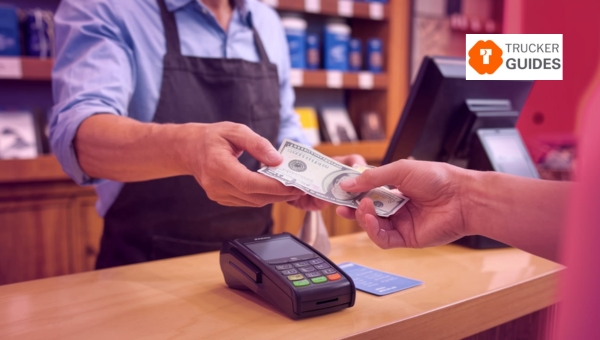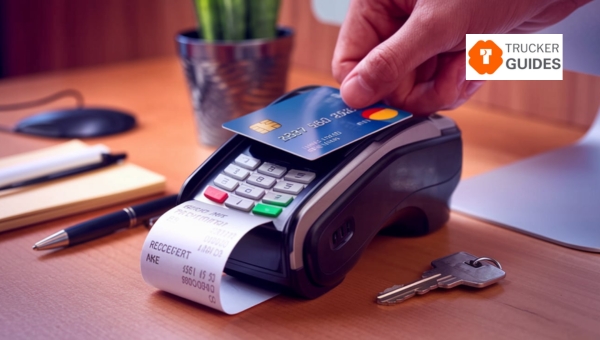Diving into the world of payment processing can feel like navigating a maze, but don’t worry—I’ve got you covered. In this guide, you’ll discover everything you need to know about payment processing, from the basics to the nitty-gritty details.
We’ll break down the essential components, explain how the entire process works, and uncover the costs involved. Plus, we’ll explore the importance of security best practices. By the end, you’ll be well-equipped to make informed decisions for your business. Let’s dive in!
Understanding Payment Processing
Payment processing is the backbone of modern commerce, ensuring that transactions between buyers and sellers are smooth, secure, and efficient. It involves a series of technical steps and systems that work together to facilitate the transfer of funds.
Let’s dive into the fundamental concepts and the detailed process of how payment transactions are processed.
The Basics of Payment Processing
Understanding the basic elements of payment processing is crucial for businesses. Here are the key concepts:
- Credit Card Payments: Allow customers to purchase goods and services now and pay later.
- Debit Card Payments: Directly deduct money from a customer’s bank account.
- ACH (Automated Clearing House): Electronic network for financial transactions, primarily used for bank-to-bank transfers.
- Mobile Payments: Utilize smartphones for transactions through apps like Apple Pay or Google Wallet.
- Authorization: This step verifies if the customer’s payment method has sufficient funds or credit to cover the transaction. It’s a critical step that helps prevent fraud.
- Settlement: The final stage where the money is transferred from the customer’s bank account to the merchant’s account. This process usually takes a few days to complete.
- Chargebacks: These occur when a customer disputes a transaction, leading to a reversal of the payment. Chargebacks can affect business cash flow and incur additional fees.
How Does Payment Processing Work?
The journey of a payment transaction involves several key steps. Here’s a step-by-step breakdown:
- Customer Initiates Payment: The customer provides payment information, either through a physical terminal in a store or an online form.
- Information Encryption: To protect sensitive data, the payment information is encrypted before being sent to the payment processor. This ensures that the data remains secure during transmission.
- Authorization Request: The payment processor forwards an authorization request to the customer’s bank. This request asks the bank to verify the availability of funds or credit.
- Bank Response: The bank checks the customer’s account and responds with either an approval or a decline message. If approved, the bank places a hold on the necessary funds.
- Transaction Completion: Once the authorization is approved, the transaction is considered complete. The customer receives a receipt, confirming the purchase.
- Settlement:Finally, the actual transfer of funds occurs. The customer’s bank sends the money to the merchant’s bank, completing the transaction. This step typically takes a few days, depending on the banks involved.
Also Read: Top 7 Best PPC of Agencies to Maximize Conversions Now
Components of Payment Processing
Payment processing involves several key components that work together to facilitate transactions seamlessly. Understanding these components is critical for businesses aiming to optimize their payment systems.
Let’s dive into the essential parts of payment processing, including payment gateways, payment processors, payment service providers, and the mechanics of card payments.
1. Understanding Payment Gateways and Payment Processors
Payment gateways and payment processors are integral to the payment processing system, each serving distinct roles:
- Payment Gateway:
- Interface Role: Acts as the bridge between the merchant and the customer, ensuring that the payment information is transmitted securely.
- Encryption: Encrypts sensitive payment data to safeguard it during transmission.
- User Experience: Provides a streamlined and user-friendly experience for customers making online purchases.
- Transaction Initiation: Begins the transaction process by forwarding payment details to the payment processor.
- Payment Processor:
- Backend Role: Manages the backend operations of processing transactions.
- Authorization: Contact the customer’s bank to verify the availability of funds or credit.
- Settlement: Handles the transfer of funds from the customer’s bank to the merchant’s bank.
- Continuous Communication: Maintains constant communication with banks to ensure smooth transaction processing.
Understanding the difference between these two components is crucial for businesses to ensure efficient and secure payment processing.
2. Defining Payment Service Providers
Payment Service Providers (PSPs) offer a comprehensive range of services that simplify the payment process for businesses. Here’s a closer look at their role in the payment ecosystem:
- Integrated Solutions: PSPs provide solutions that combine the functionalities of both payment gateways and processors, offering a one-stop shop for businesses.
- Multi-Channel Support: They enable businesses to accept payments through various channels, such as online, mobile, and in-store, providing flexibility and convenience.
- Risk Management: PSPs offer advanced fraud detection and risk management tools to protect merchants from fraudulent activities.
- Merchant Accounts: Facilitate the creation and management of merchant accounts, which are necessary for processing credit and debit card payments.
- Support and Maintenance: Provide ongoing support and maintenance to ensure that the payment systems operate smoothly without interruptions.
3. Understanding Card Payments: Debit and Credit
Card payments, whether debit or credit, are a common method of payment in today’s digital economy. Here’s a breakdown of how these transactions work:
- Debit Card Payments:
- Immediate Deduction: Funds are immediately deducted from the customer’s bank account.
- Authorization: The payment processor contacts the customer’s bank to check the account balance and approve the transaction.
- Settlement: Once approved, the funds are swiftly transferred to the merchant’s account.
- Security: Often protected by a PIN (Personal Identification Number) to enhance security.
- Credit Card Payments:
- Credit Line: Utilizes a line of credit provided by the card issuer, allowing customers to make purchases up to a certain limit.
- Authorization: Similar to debit cards, the payment processor seeks approval from the card issuer.
- Settlement: Approved transactions result in the transfer of funds from the card issuer to the merchant, with the customer being billed later.
- Interest and Fees: Customers may incur interest and other fees if the balance is not paid in full by the due date.
Also Read:http://Types of Accounting Services [Everything You Need to Know]
The Importance of Payment Processing
The intricate world of payment processing is essential for both businesses and customers. Effective payment processing ensures seamless transactions, which is vital for customer satisfaction and business growth.
Dive in as we uncover the advantages of payment processing solutions and discuss the key considerations that businesses should keep in mind.
Advantages of Payment Processing Solutions
Effective payment processing solutions offer a plethora of advantages for businesses:
- Streamlined Transactions: Smooth and fast transactions enhance the customer experience, reducing wait times and ensuring satisfaction.
- Increased Sales: By offering various payment options like credit cards, debit cards, and mobile payments, businesses can cater to a broader audience, thus boosting sales.
- Enhanced Security: Advanced security measures protect customer data, minimizing the risk of fraud and building customer trust.
- Operational Efficiency: Automation in payment processing reduces manual errors and saves valuable time, allowing businesses to focus on core activities.
- Data Insights: Payment processing solutions often come with analytical tools that provide insights into consumer behavior, helping businesses make informed decisions.
Key Considerations: Client Support, Security, and Integrations
When choosing payment processing solutions, businesses need to weigh several critical factors:
- Client Support: Reliable and accessible client support is crucial. It ensures that any issues or queries are resolved promptly, maintaining smooth operations.
- Security Measures: Look for solutions that comply with industry standards, such as PCI DSS. Secure processing protects both the business and its customers from potential breaches.
- System Integrations: Ensure that the payment processing solution integrates seamlessly with existing systems like accounting software, e-commerce platforms, and CRM systems. This ensures that all business operations are aligned and efficient.
Also Read: 8 Best Merchant Services [Boost Your Profits Now]
Best Security Practices in Payment Processing
Security in payment processing is vital to protect both businesses and customers from fraud and data breaches. It is crucial to implement best practices to maintain trust and ensure secure transactions. Let’s delve into the importance of compliance and technological measures that can bolster security.
Importance of PCI Compliance and EVM Compliance
Ensuring security in payment processing starts with understanding and adhering to critical compliance standards. Two of the most important ones are PCI Compliance and EVM Compliance.
PCI Compliance:
- What It Is: The Payment Card Industry Data Security Standard (PCI DSS) is a set of security standards designed to ensure that all companies that accept, process, store, or transmit credit card information maintain a secure environment.
- Why It Matters: Compliance with PCI DSS helps reduce the risk of data breaches. It safeguards sensitive cardholder data, thereby protecting businesses from potential financial losses and reputational damage.
- Data Encryption: Ensures that cardholder data is encrypted during transmission.
- Access Control: Restricts access to cardholder data to only those who need it.
- Regular Monitoring: Continuous monitoring and testing of networks to detect and respond to security vulnerabilities.
EVM Compliance:
- What It Is: EVM stands for Europay, MasterCard, and Visa. It refers to the global standard for credit and debit card payments based on chip card technology.
- Why It Matters: EVM Compliance enhances security by making it more difficult for fraudsters to clone cards. The chip technology provides stronger security features than traditional magnetic stripe cards.
- Key Measures:
- Chip Authentication: The chip in the card generates a unique code for each transaction, making it nearly impossible to duplicate.
- Liability Shift: Encourages merchants to adopt EVM technology by shifting fraud liability to those who do not use it.
The Role of Tokenization in Payment Security
Tokenization is the process of replacing sensitive data with unique identification symbols that retain all the essential information about the data without compromising its security.
How Tokenization Works:
- Data Replacement: Instead of storing card data, the system replaces it with a randomly generated token.
- Token Storage: The actual card data is stored securely in a token vault, which is a secure database.
- Transaction Use: The tokens can be used for transactions, but they are meaningless to anyone who intercepts them.
Benefits of Tokenization:
- Enhanced Security: Since tokens cannot be used outside the specific transaction or context they were created for, the risk of fraud is minimized.
- Simplified Compliance: By reducing the amount of sensitive data that needs to be protected, tokenization can simplify compliance with security standards like PCI DSS.
- Reduced Data Breaches: Even if tokens are intercepted, they are useless without the token vault, reducing the potential impact of data breaches.
Conclusion
Payment processing is essential for any business looking to succeed in today’s digital economy. From the basics of payment processing to the intricate details of fees and security, each aspect plays a crucial role.
By implementing effective payment processing solutions, businesses can enhance their operational efficiency, boost sales, and ensure customer trust. Remember, a secure and seamless payment process is not just a transaction; it’s a cornerstone of customer satisfaction and business growth.




